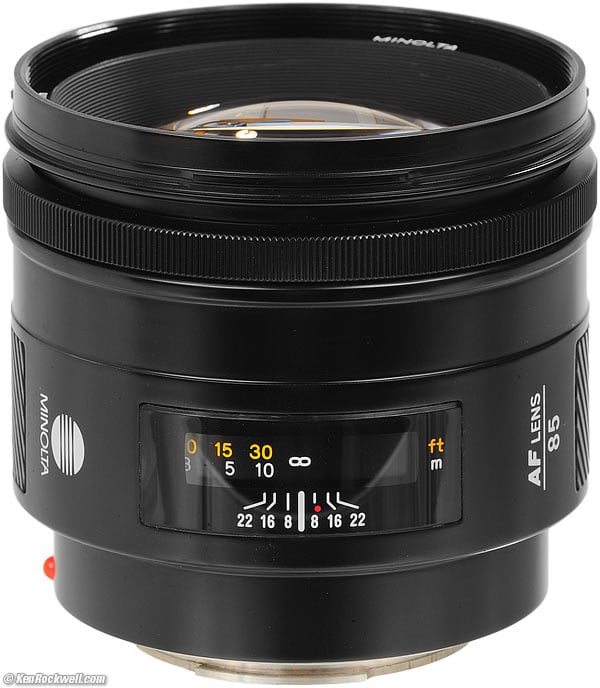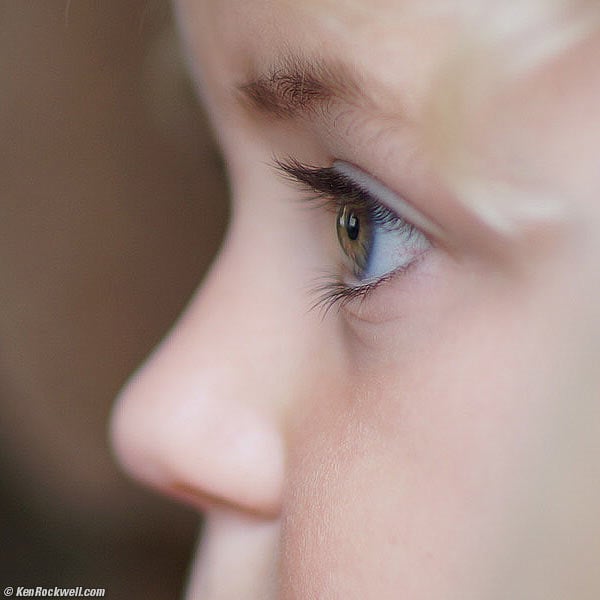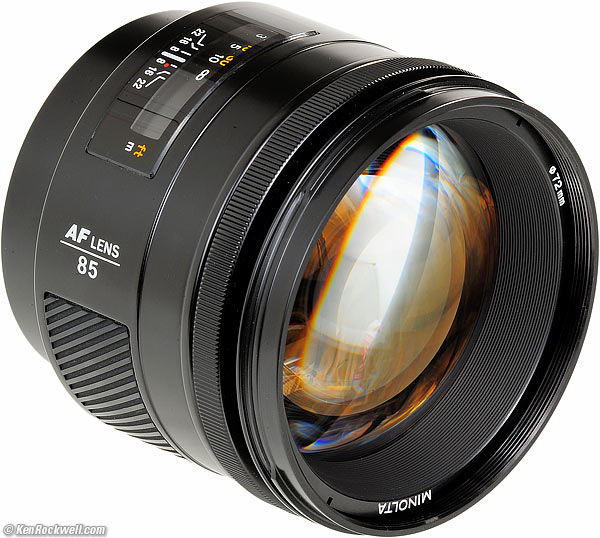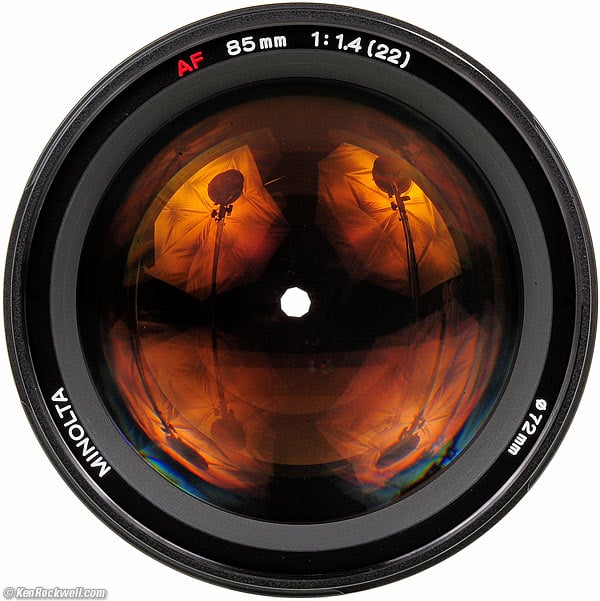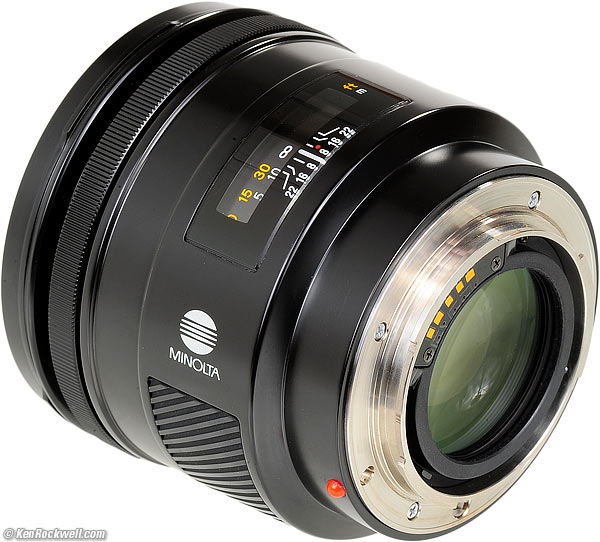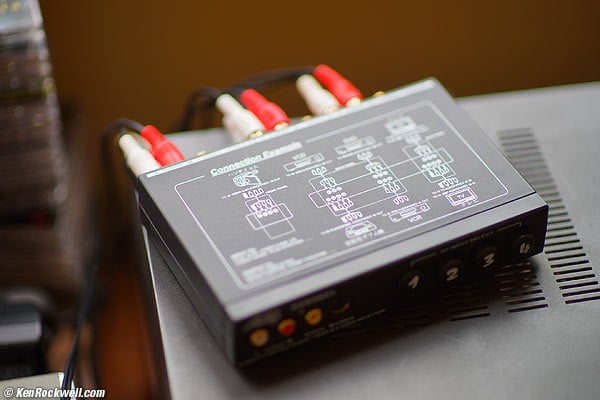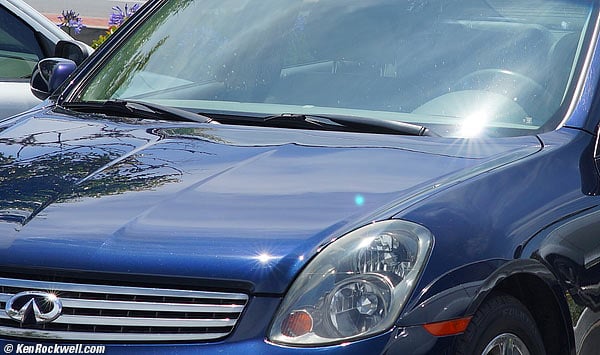Home Donate New Search Gallery Reviews How-To Books Links Workshops About Contact
Minolta 85mm f/1.4
Full-Frame
for MAXXUM and Sony (1987-2006).
World's first circular-diaphragm SLR lens.
World's first AF ultra-speed tele.
© 2013 KenRockwell.com. All rights reserved.
Intro Specifications Performance Compared Recommendations
Minolta MAXXUM AF 85mm f/1.4 (metal 72mm filter thread, 19.4 oz./551g, 2.8'/0.85m close focus, about $700 used. enlarge. My biggest source of support is when you use this link directly to them at eBay (How to Win at eBay) and to them at Amazon, or use any of these links when you get anything, regardless of the country in which you live. Please always use these links when getting any of your gear so I can continue to share what I know for free — but I receive nothing for my efforts if you buy elsewhere. I'm not NPR; I get no government hand-outs and run no pledge drives to support my research, so please always use any of these links for the best prices and service whenever you get anything. Thanks for helping me help you! Ken.
Molly at f/4, 07 June 2013 . (Cropped from horizontal Sony A99 image, Minolta MAXXUM AF 85mm f/1.4, f/4 at 1/100 at Auto ISO 3,200, Athentech Perfectly Clear.) Full frame or Full-Resolution.
Dildoplant at f/1.4, 07 June 2013. (Sony A99, Minolta MAXXUM AF 85mm f/1.4, f/1.4 at 1/800 at Auto ISO 100.) Bigger or Full-Resolution.
How sharp is it at f/1.4? Here's a crop from the above image at 100%:
Crop from above at 100% at f/1.4. Full image file.
Katie at f/1.4, 06 June 2013. (Sony A99, Minolta MAXXUM AF 85mm f/1.4, f/1.4 at 1/500 at Auto ISO 100.) Bigger or Camera-Original file.
Crop from above image at f/1.4 at 100%. Camera-Original file.
Katie plays with her chopsticks, 06 June 2013. (Sony A99, Minolta 85mm f/1.4, f/1.4 at 1/100 at Auto ISO 1,250, Athentech Perfectly Clear plug-in.) bigger.
June 2013 Minolta Sony Pentax Nikon Canon All Reviews Better Pictures
Why Fixed Lenses Take Better Pictures.
Introduction top
Intro Specifications Performance Compared Recommendations
The Minolta MAXXUM AF 85mm f/1.4 is a fast, short tele ideal for close-in people photos. At f/1.4, it is superb at throwing distracting elements out-of-focus, with rendition optimized for people pictures.
It's all solid alloy and much better made than Nikon's similar lenses. This Minolta 85 1.4 has an all-metal exterior, metal mount, metal focus ring, metal filter threads, and all-metal barrel. The only plastic is the focus window, the red mounting dot and the rubber.
It was originally released for use on Minolta MAXXUM cameras, and today is perfect for use on Sony Alpha cameras. Used on today's Sony A99 it has image stabilization and fast autofocus.
It works perfectly on the Sony A99, although the AF-D Depth Map AF (whatever that is) and the automatic lens corrections don't work - and aren't needed. Everything else works, like face recognition and all the focus modes including Direct Manual Focus (DMF) override, so all is well.
This $700 all-metal lens takes the same pictures as Zeiss's $1,700 85mm f/1.4.
There is no instant manual-focus override in the lens itself, although the Sony A99's DMF mode will give you that feature.
This is the world's first autofocus ultra-speed tele. Nikon didn't copy it until almost ten years later in 1995!
This is a spectacular show-off lens for Minolta. No newer 85mm lens from anyone will make pictures any better than will this lens.
This is a full-frame lens for 35mm film and full-frame digital, and will be reviewed thusly. Feel free to use this on cropped-frame cameras, too.
Minolta Maxxum AF 85mm f/1.4. enlarge.
History
1987-1993
This version is the world's first autofocus ultraspeed tele.
It was introduced in 1987, 2 years after the first Minolta MAXXUM 7000.
1993-2000
Minolta added a rubber focus ring and a focus lock button and a "G" to the name in 1993.
It has exactly the same optics.
I don't know if the barrel is still solid alloy.
2000-2006
Minolta again repackaged exactly the same optics and added a "D" to the marketing name in 2000, claiming better distance encoding.
2001
Minolta repackaged exactly the same optics a fourth time and added an "LE" to the marketing name in 2001 as a "Limited Edition." Who's kidding who?
2006-today
Sony bought Minolta in 2006, and decided to sell a Zeiss-branded 85/1.4 instead. The Zeiss uses different, but similar, optics.
Specifications top
Intro Specifications Performance Compared Recommendations
Name top
Minolta calls this the MAXXUM AF 85mm f/1.4 (22).
MAXXUM is Minolta's autofocus brand, called Dynax outside the US.
The (22) is the smallest f/stop.
Optics top
7 elements in 6 groups.
"Floating System" in which different groups of elements rearrange themselves as focused for optimum performance regardless of distance.
Most of the lens and diaphragm move forwards as focused more closely, while the rear element is controlled by a cam and first moves forward, then back.
Coated mostly in amber and green.
Diaphragm top
Minolta 85mm f/1.4 at f/22. bigger.
9 curved blades.
Stops down to f/22.
Astoundingly circular to f/2.8. It's so circular at f/2 it looks like a Waterhouse stop!
Nonagonal from f/4 to f/22.
This is perfect: it has a perfectly round aperture to f/2.8, and becomes straight-sided at f/4 and up for great sunstars.
Coverage top
35mm film, full-frame and smaller format digital.
Focal Length top
85mm.
When used on an APS-C style camera, sees an angle of view similar to what a 135mm lens sees when used on a full-frame or 35mm camera.
Angle of View top
28.5º on full-frame.
Close Focus top
2.8 feet (0.85 meters) from the image plane.
Maximum Reproduction Ratio top
1:7.8 (0.128 x life size).
Hard Infinity Focus Stop? top
Yes.
This is great for astronomy; just turn to the stop and you have fixed laboratory-perfect focus all night.
Focus Scale top
Yes.
Depth-of-Field Scale top
Yes, but compressed.
Infra-Red Focus Index top
Yes.
Aperture Ring top
No.
Filter Thread top
72mm.
Solid alloy.
Does not rotate, but does move in and out with focus.
Size top
3.11" (79mm) diameter by 2.83 ~ 3.39" (72 ~ 86mm) extension from flange.
The front extends as focused more closely.
Weight top
19.445 oz. (551.2g), actual measured.
The hood measures 1.135 oz. (32.2g).
Minolta specifies 19.75 oz. (560g).
Hood top
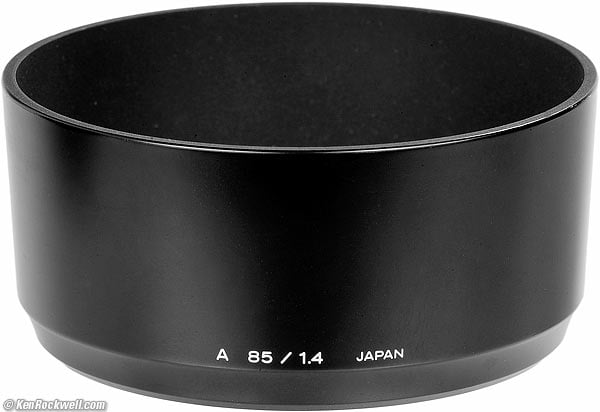
Minolta 85mm f/1.4 hood.
Plastic bayonet hood included.
Caps top
72mm snap-in front cap and standard MAXXUM rear cap.
Quality top
Made in Japan.
Minolta Product Number top
25921.
Price, USA top
About $700 used (How to Win at eBay).
Performance top
Intro Specifications Performance Compared Recommendations
Overall Autofocus Bokeh Distortion Ergonomics
Falloff Filters Flash Exposure Focus Breathing Ghosts
Hood Lateral Color Fringes Macro Mechanics
Sharpness Spherochromatism Sunstars Survivability
Overall performance top
The Minolta 85mm f/1.4 performs as well as Nikon and Canon's ultraspeed 85mm lenses, which is excellently.
It performs as expected for a fast, spherical Gauss-derived short fast tele. It has slightly lower contrast at f/1.4, and perks right up stopped down to f/2 and f/2.8. Even at f/1.4 as you can see at the top, it is very sharp, and it has beautifully smooth backgrounds at all apertures.
It works very well, especially on a Sony A99, with fast autofocus and great sharpness.
Its performance is about the same as Nikon's and Canon's similar lenses: excellent. This was a show-off lens for Minolta, as it is for Nikon and Canon, so Minolta didn't screw around with this one.
Today in 2013, it is still a fantastic lens. Today's designs aren't much different, and aren't significantly better.
Autofocus performance top
AF Speed
One full turn (two half-turns) of the AF screw brings it from infinity down to 15 feet.
AF speed is fast on today's Sony A99.
It takes a moment to motor in and out on a classic 1985 Minolta MAXXUM 7000, and is entirely acceptable, even today.
AF Accuracy
On the Sony A99, focus is perfect. As you can see at the samples at the top, it's dead-on at f/1.4.
Manual Focus
Manual focus is perfect; a 120º turn of the ring brings you from infinity to the closest focus distance.
The ring is undamped; it can flick around with a fingertip.
Thje solid alloy focus ring feels great. Nikon copied these focus rings — except in plastic — for its AF lenses in 1986, and they feel awful in plastic, but great in solid alloy here.
Bokeh performance top
Bokeh, the character of out of focus backgrounds, not simply how far out of focus they are, is beautiful.
One of the main reasons professionals own 85mm f/1.4 lenses is for their ability to throw backgrounds way out of focus, and this lens is optimized for great bokeh.
Out-of-focus backgrounds and foregrounds remain soft at every aperture, as they should. They are never busy or distracting.
Distortion performance top
The Minolta 85mm f/1.4 has no visible distortion.
For scientific use, what little distortion it has can be corrected by using these factors in Photoshop's lens distortion filter:
On full-frame |
|
∞ |
+0.8 |
10' (3m) |
+0.8 |
© 2013 KenRockwell.com. All rights reserved.
Ergonomics (handling and ease-of-use) performance top
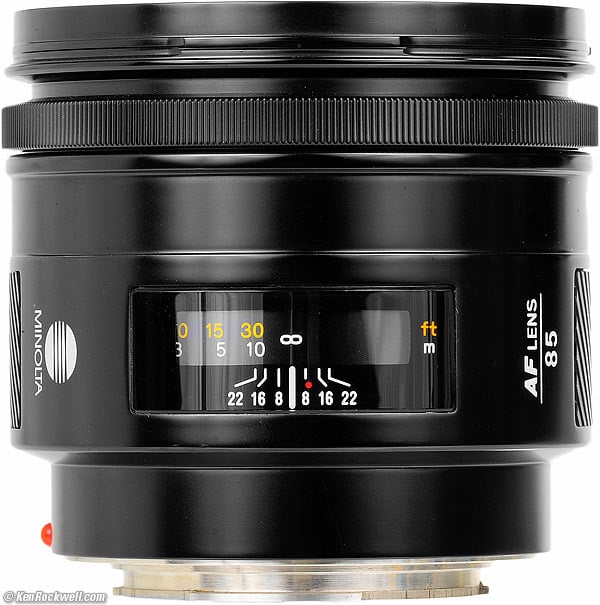
Minolta 85mm f/1.4.
Ergonomics are easy; the whole lens is a big handle for mounting and unmounting.
Likewise for shooting, the entire metal barrel is rubber-covered for a much sturdier grip than you can get from other brand 85/1.4s. Just grab this all-metal grapefruit and you're good.
Swapping between auto and manual focus requires moving a switch on the camera, or maybe using the Sony A99's DMF mode, any of which can be a big pain depending on your camera. There is no instant manual-focus override in the lens itself.
Falloff (darkened corners) performance top
Falloff on FX and 35mm is visible at f/1.4, and gone otherwise. It will be even less of an issue on APS-C type cameras.
The Shading Correction in the Sony A99 probably doesn't recognize this lens; I leave it OFF.
I've exaggerated the falloff by shooting a gray field and placing these on a gray background.
Minolta AF 85mm f/1.4 falloff on full frame and 35mm, no correction:
© 2013 KenRockwell.com. All rights reserved.
|
Filters, use with performance top
There is no problem with vignetting on full-frame with any normal filter, or even two stacked filters.
The filter ring doesn't rotate.
Flash Exposure performance top
This original 1985 Minolta MAXXUM AF 85 gives great exposure with flash, even shot into a mirror with the flash shining back at itself.
Focus Breathing performance top
Of interest mostly to cinematographers focusing back and forth between two subjects, the image of a fixed subject continuously gets larger as the lens is focused more closely.
Flare and Ghosts performance top
Ghosts are no problem with this multicoated lens, even on the complex Sony A99 which has all sorts of internal mirrors in the optical shooting shooting path.
Here's looking directly into the disk of the sun, which was blinding in person:
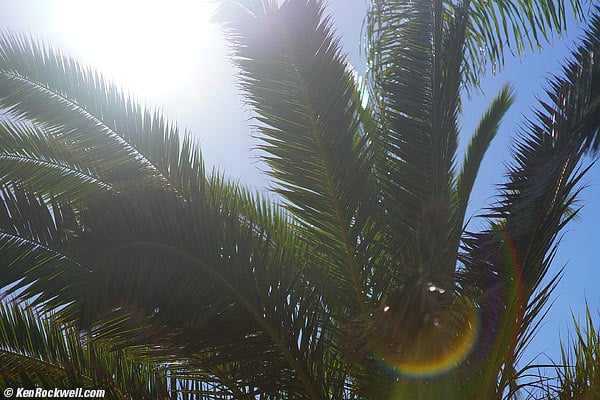
Minolta 85mm f/1.4 at f/2.2.
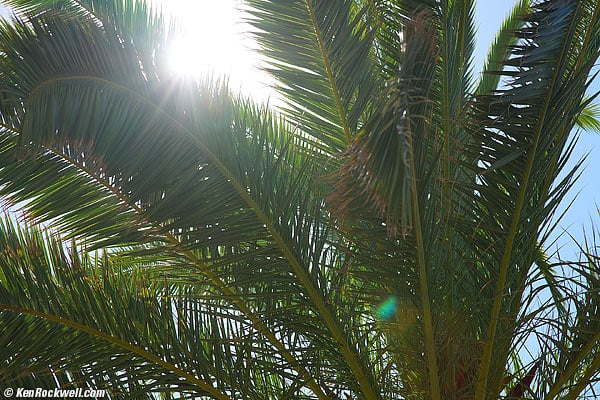
Minolta 85mm f/1.4 at f/7.1.
If you go as far out of your way as I did here, there is a large blob opposite the sun at large apertures, which becomes a smaller, brighter spot at smaller apertures.
These samples are without a filter. With a filter on the Sony A99 there may be one more brighter spot opposite the sun; a reflection from the back of the filter.
Hood performance top
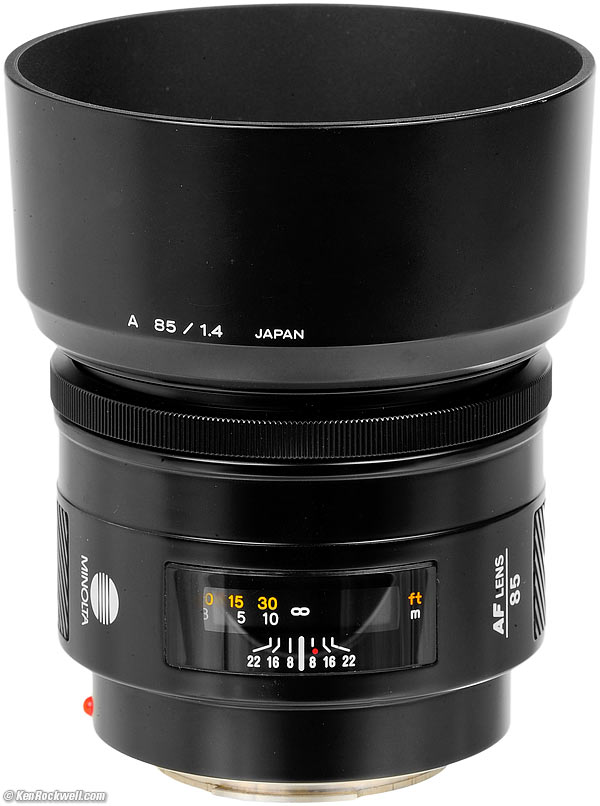
Minolta 85mm f/1.4 with hood.
The included plastic hood works fine, and reverses over the lens.
I never use it. It's the only plastic thing about this lens.
Lateral Color Fringes performance top
There are but the slightest magenta-green lateral color fringes visible on an uncorrected Sony A99 at 24 MP.
There is significant spherochromatism if you aren't in perfect focus at f/1.4 as well as axial chromatic aberation at f/1.4; these are different issues.
Macro performance top
Macro isn't really, it gets to 2.8 feet (0.85 meters) from the image plane, which is a 1:7.8 (0.128 x) reproduction ratio.
In other words, it will let a subject as small as 7.4 x 11 inches (187 x 281mm) fill the full frame (4.6 x 6.9 inches or 117 x 176 mm on APC-C style cameras).
For real macro work, use the Minolta MAXXUM 100mm f/2.8 Macro instead, for half the price. It gets almost 8 times closer!
Mechanics and Construction performance top
Rear, Minolta 85mm f/1.4. enlarge.
In action to outstanding optics, the Minolta 85mm f/1.4 is all metal, a real lens instead of the disposable plastic garbage churned out today.
Filter Threads, Hood Mount and Forebarrel
Solid alloy.
Identity Ring
Solid alloy.
Engraved and filled with two colors of paint.
Minolta is proud of this masterpiece!
Focus Ring
Solid alloy.
Barrel Exterior
Alloy, rubber covered.
Depth-of-Field Scale
Yes, small.
Aperture Ring
None.
Mount
Chromed metal.
Barrel Markings
Paint.
Mounting Index Dot
Red plastic ball.
Serial Number
Engraved into bottom of barrel and filled with white paint.
Moisture seal at mount
No.
Noises When Shaken
Mild clunking.
Made in
Japan.
Sharpness performance top
Yes, it's very sharp, duh. Image sharpness depends more on you than your lens, and lens sharpness doesn't mean much to good photographers.
The MAXXUM 85mm's biggest limitation is you getting it in perfect focus at f/1.4, not the lens itself.
As shot on the full-frame 24MP Sony A99:
At f/1.4
As you can see at the top, it's super-sharp for actual photography at f/1.4.
In the laboratory at infinity, secondary (green-magenta) axial chromatic aberration is seen on contrasty black-and-white subjects in the center.
Except for a bit less contrast and the possibility of some contrast-lowering color fringes, everything is sharp corner-to-corner at f/1.4.
At f/2
Most of the axial chromatic aberration is gone, the contrast perks up and everything is almost perfect in the lab. The sides are just a tiny bit softer than the center.
At f/2.8
The center is now perfect, and the sides and corners are almost perfect, too.
At f/4
Everything is perfect, edge-to-edge.
At f/5.6
Everything is the same as at f/4.
At f/8
f/4 and f/5.6 are so crazy-sharp that even at f/8, some very slight dulling is visible from diffraction. This is good; it means this 85 1.4 is so smokin' good that the laws of physics are the biggest limitation to sharpness from f/8 and above!
At f/11
f/11 is just a little less sharp than f/5.6, all due to diffraction.
At f/16
It's a little softer all over; diffraction is limiting performance.
At f/22
It's softer, don't use f/22 unless you need it for depth of field since diffraction is worst at f/22.
Spherochromatism performance top
Spherochromatism, sometimes mistakenly called "color bokeh" by laymen, is a minor aberration which can add slight color fringes to out-of focus highlights in fast, long lenses.
This fast, long lens is optimized for great bokeh, and as expected, has the usual spherochromatism. It can be visible at f/1.4 as shown below, and goes away as stopped down.
Minolta 85mm f/1.4 Spherochromatism at f/1.4, full-frame.
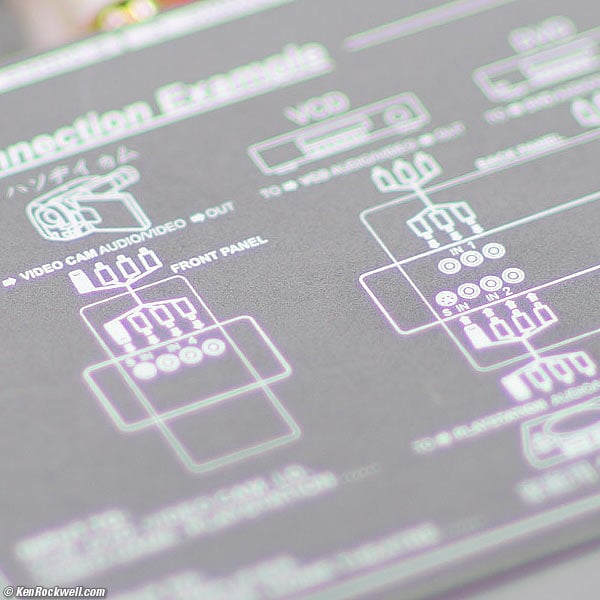
Crop from above.
Since background highlights may grow green fringes, it helps bokeh in most cases with green backgrounds.
Sunstars performance top
The circular diaphragm does nothing at large apertures, but by f/5.6 and smaller the 9-bladed diaphragm makes great 18-pointed sunstars:
Sunstars at f/7.1, APS-C crop from full-frame. bigger.
Survivability performance top
This sample of Minolta 85mm f/1.4 is from 1987 and is still indistinguishable from brand-new today in 2013, 26 years later.
Unlike today's plastic copies, this lens ought to last forever, and if it ever needs a cleaning, any competent repairman ought to be able to take care of it.
It has no motors and no encoders. There is nothing critical to go wrong that a good repairman can't fix. The only electronics are a ROM chip that should not wear out unless you go doing something stupid, like trying to take it apart.
It is perfectly normal for the rubber grip on the barrel to turn white from lack of use. The whiteness rubs off with use; a white looking barrel means a lens that hasn't been used much.
Therefore unlike many AF lenses today, this 85 AF Macro ought to last last for plenty of more decades of great pictures. Good luck on that one, Zeiss.
Compared top
Intro Specifications Performance Compared Recommendations
I prefer this version to newer ones because it feels like a real lens. I don't know if newer ones also have metal barrels.
Newer ones will have an AF-lock button on the lens, which can be very handy.
Nikon and Canon's fast 85mm lenses have similar optical performance.
Nikon's 85/1.4 AF-D has even tougher mechanics with weaker optics on the sides, while Nikon's newer 85/1.4 G has weaker mechanics with even better optics.
Canon's 85/1.2 lenses have more plastic on them, but are made as well and also have even slightly better optics— but focus much more slowly. Canon's f/1.2 85mm lenses are for science, while the Minolta 85/1.4 focuses fast for real people shots. Don't use the Canon f/1.2 lenses for real photography, use anything else unles you can tolerate glacial-slow AF.
Canon's 85mm f/1.8 is a marvelous lens and made as well — but with a lot more plastic.
Recommendations top
Intro Specifications Performance Compared Recommendations
I bought this Minolta 85mm f/1.4 for my Sony A99 for use as a close-up portrait lens. I have yet to test the Zeiss 85/1.4.
This is a magnificent lens for use on all Minolta MAXXUM and Sony Alpha cameras. There is no reason to buy anything newer, unless you want an on-lens focus lock. Spend more money if you want, but you won't be able to make any better pictures with any other 85mm lens.
Use the aperture-priority mode on the Sony A99 and most Sonys; when using Program and Auto ISO modes, most Sonys have defective programming that rarely shoots wider than f/4, completely wasting the whole point of this lens.
If you've found the time, effort and expense I incur researching and sharing all this information for free, this free website's biggest source of support is when you use this link directly to them at eBay as I did (How to Win at eBay) or to them at Amazon, or use or any of these links when you get anything, regardless of the country in which you live. Please always use these links when getting any of your gear so I can continue to share what I know for free — because I receive nothing for my efforts if you buy elsewhere. I'm not NPR; I don't get any government grants or have annoying fund drives to help me research and give all this information away for free.
Thanks for your support!
Ken.
Help me help you top
I support my growing family through this website, as crazy as it might seem.
The biggest help is when you use any of these links when you get anything, regardless of the country in which you live. It costs you nothing, and is this site's, and thus my family's, biggest source of support. These places have the best prices and service, which is why I've used them since before this website existed. I recommend them all personally.
If you find this page as helpful as a book you might have had to buy or a workshop you may have had to take, feel free to help me continue helping everyone.
If you've gotten your gear through one of my links or helped otherwise, you're family. It's great people like you who allow me to keep adding to this site full-time. Thanks!
If you haven't helped yet, please do, and consider helping me with a gift of $5.00.
As this page is copyrighted and formally registered, it is unlawful to make copies, especially in the form of printouts for personal use. If you wish to make a printout for personal use, you are granted one-time permission only if you PayPal me $5.00 per printout or part thereof. Thank you!
Thanks for reading!
Mr. & Mrs. Ken Rockwell, Ryan and Katie.
Home Donate New Search Gallery Reviews How-To Books Links Workshops About Contact
